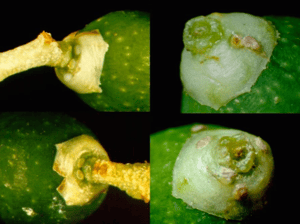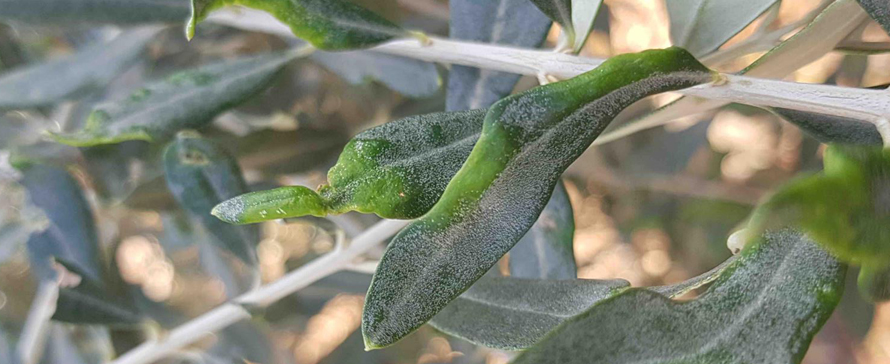Listen to this article
Most common olive tree plagues
Olive gull mite
This arthropod can cause harm in young leaves and fruit, but generally it is not severe. In young olive trees this can significantly slow down growth. Attacks usually occur in trees with too much nitrogen-based fertilizer, too much watering, or too much insecticide that eliminates the population of their natural predators.
Olive moth
(Prays oleae)
This is a moth that eats only from the olive tree, and is present in all the seasons of the year in one form or another. The first generation eats the leaves and buds, acting mainly as a leafminer. The second generation eats the blossoms, so it can affect the ultimate number of set fruits.

Glyphodes / Jasmine moth
(Margaronia unionalis)
The caterpillar feeds on the tender sprouts of the olive tree, permanently damaging the main bud. This plague is typical in new plantations where it can affect the economic percussion of the grove since it slows down the development of the young trees -- they have to sprout again through an auxiliar bud and continue growing through this one.

Olive tree beetle
(Otiorhynchus cribricollis)
During the day this beetle burrows into the ground underneath the olive tree crown. At night it climbs up to the crown and eats the leaves, leaving very characteristic marks.
The damage can be quite severe in young seedlings because it stunts the growth by drastically reducing the plant/wood ratio and the plant/root ratio. In the adult olive tree the damages usually go unnoticed.
Barrenillo / Olive bark beetle
(Phloeotribus scarabaeoides)
As an adult, this beetle spends the summer making food galleys in the axils of the small sprouts, leaves, and olives in order to feed itself. These galleys weaken and even cause these branches, leaves and olives to dry up. When it is windy or when the olive tree is vibrated, the branches that have a galley at their base break off, which causes the loss of many sprouts and their corresponding production, both for that year and the following years, too.
Olive fruit fly
(Dacus oleae)
This plague causes the most economic harm to the olive grove. While it produces no harm to the tree itself, it does produce considerable damage to the olives, reducing both the quantity and the quality of the crop.
The larva consumes a significant percentage of the olive pulp, which considerably affects the weight of the fruit and hence the harvest. However, this is not the worst part of the damage by the larva of the olive fruit fly.
The reproductive activity of the olive fruit fly occurs between the hardening of the olive pit and veraison. When the temperture is under 35ºC, the female fly can lay fertile eggs. If it is hotter than that, eggs cannot be viably laid.
The best way to monitor the activity of the olive fruit fly is through the tiny holes made by them.
There are different methods of control, but their effectiveness is always very limited.
- The first strategy is to make the fruit not appealing to the flies. This is done by holding back irrigation in the summer, or using kaolin clay or diatomaceous earth.
- Another way to carry out the patch system is through band application of herbicides by small airplanes used for large areas of farming associations, which is very effective.
- You can also use traps with substances that attract the flies, similar to how patches are used. This is the most common method of control used in organic farming.
Different means of control can also be combined during one season and in the same farm, depending on the situation.
.png)





